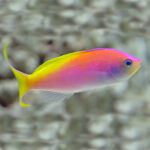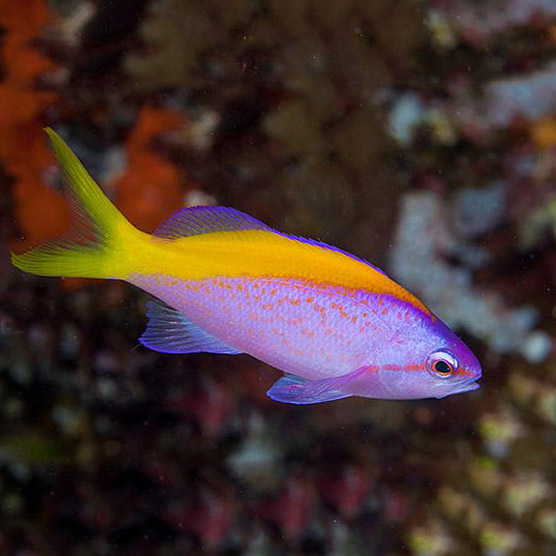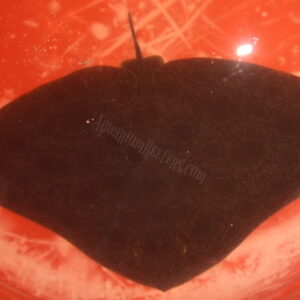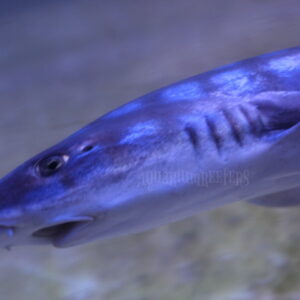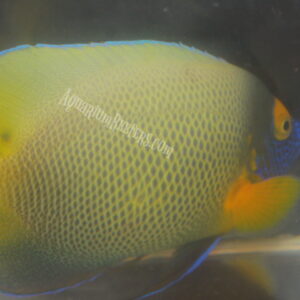Description
Evansi Anthias, Pseudanthias evansi, also go by the name Yellowback Anthias. They are gorgeous fish, with distinctive purplish blue bodies. Which contrasts nicely against their bright yellow backs and tails. They have a red stripe running from their eye to gill and a light splattering of red freckles on their sides.
These fish range from: the Andaman Sea, the East Coast of Africa and to Christmas Island, in the Indian Ocean. They live on and around: coral reefs, steep slopes, channels, drop offs or caves. The complex structures help the fish dodge predators. When feeling threatened, they will quickly vanish and anchor themselves into nooks and crannies.
In nature, Evansi Anthias feed passively, as do most types of Anthias. Which means they stay in relatively still positions, while facing the current. When Pelagic zooplankton drifts towards them in the water, the fish snatch their food up. With this method, the hunters easily get hold of small critters and eggs, while using up the smallest amount of energy possible. Feeding is fairly constant, although other behaviours punctuate this activity.
These are fish that live in social groups, with one male to around 5 or more females. Evansi Anthias are also protogynous hermaphrodites. Which means when the top male dies, the largest female in the group will turn male. It will then become the new breeding male. As a result, all juvenile Evansi Anthias, are in fact immature females.
Evansi Anthias In the Aquarium.
It is important to have good currents and regular feeding in order to imitate the natural environment. A wave maker can help with this. Hobbyists should think about using a jump guard to stop any unfortunate mishaps.
Evansi Anthias do best when fed a varied diet. They will accept frozen mysis shrimp and enriched frozen brine shrimp. They will also eat live foods, such as copepods and amphipods, that can be cultivated in attached refugium. Over time, these fish may have small amounts of high quality flake food as well. Our Anthias are adapted to aquarium life and most are eating a good quality frozen food, enriched with garlic guard and vitamins, before being offered for sale. We find that the best way to keep this species is in a small group. Hobbyists should aim to keep at least 1 Male Evansi Anthias with 3 or more females.
- Evansi Anthias
- Pseudanthias evansi
- Care: Intermediate
- Diet: Carnivorous Planktivore
- Group Size: Alone or 1 male to 3+ females
- Place of origin: Indian Ocean
- Coral Safe: Generally yes
- Critter Safe: Generally yes
The Fish pictured here are representative only and the livestock you receive may vary in pattern, coloration, and shape.


